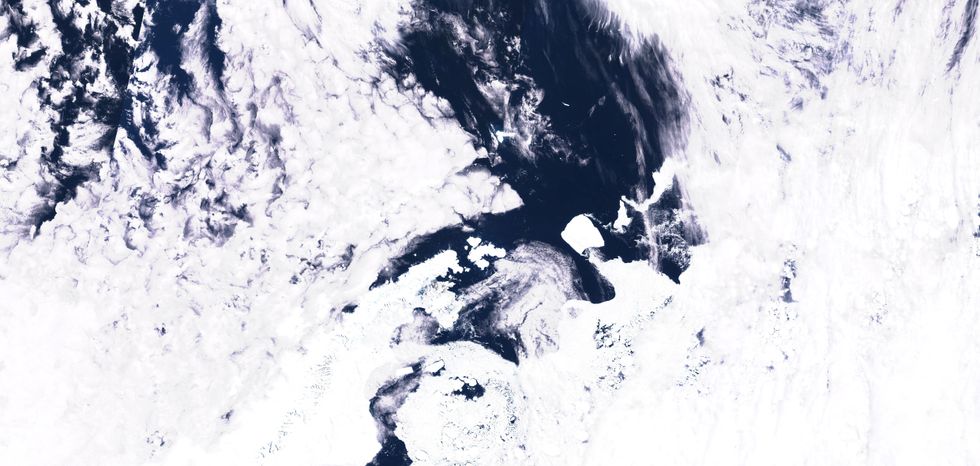The iceberg is larger than Greater London
Don't Miss
Most Read
Trending on GB News
The world’s largest iceberg is almost as thick as the Shard is tall, new data has revealed.
Scientists have used satellites to work out the scale of the frozen block, which has broken away from Antarctica and is making its way towards open waters.
Satellite measurements show the iceberg, known as A23a has a total average thickness of just over 280 metres (920ft).
The Shard, the tallest building in the UK and seventh in Europe, stands at 310 metres.
 Satellite imagery of the icebergReuters
Satellite imagery of the icebergReutersA23a has a known area of 3,900 sq km (1,500 sq miles), which gives it a mass of around a trillion tonnes.A23a has a known area of 3,900 sq km (1,500 sq miles), which gives it a mass of around a trillion tonnes.
It is approximately 40 miles wide, meaning it stretches for as far as the eye can see.
Putting this further into perspective, the colossal ice block is twice the size of Greater London.
The iceberg’s measurements come from the European Space Agency's CryoSat-2 mission, a spacecraft which carries a radar altimeter to sense how much of an iceberg is above the waterline.
LATEST DEVELOPMENTS:

The iceberg is just 30 metres shorter than the Shard
PA
The iceberg, which is on the move for the first time in almost 40 years, has become dislodged from the ocean floor and will soon drift beyond Antarctica.
Researchers say the upcoming weeks will likely decide its trajectory through the Southern Ocean.
A video released last week by the British Antarctic Survey (BAS) shows the massive block slowly moving away from the southern white continent.
The iceberg broke off from the Filchner Ice Shelf in August 1986 but became stuck on the ocean floor following its initial breakaway.
“It started moving minutely in 2020, but as you can see from the time-lapse, it started picking up speed in early 2022,” Em Newton, a digital communications officer for the BAS, told Fox News.

It last broke away almost 40 years ago
ReutersRecent satellite images show the iceberg, which once hosted a Soviet research station, is now drifting quickly past the northern tip of the Antarctic Peninsula, aided by strong winds and currents.
According to Newton, the iceberg will be swept along by currents and will enter a stretch of ocean called “iceberg alley” as it melts away.
Robbie Mallett, a sea ice scientist and research fellow at University College London, explained the breakaway was concerning as it acted as a reminder of constant climate change.
“It is the world’s biggest iceberg currently; it took that title back recently,” he told CNBC.
“And it is kind of a metaphor for how massive the cryosphere is, how big Antarctica is.
“It’s just astonishingly big and it’s a reminder of how much risk we’re at from sea level rise.”









